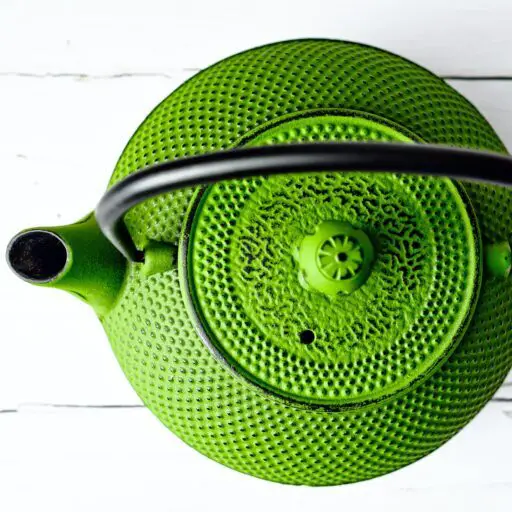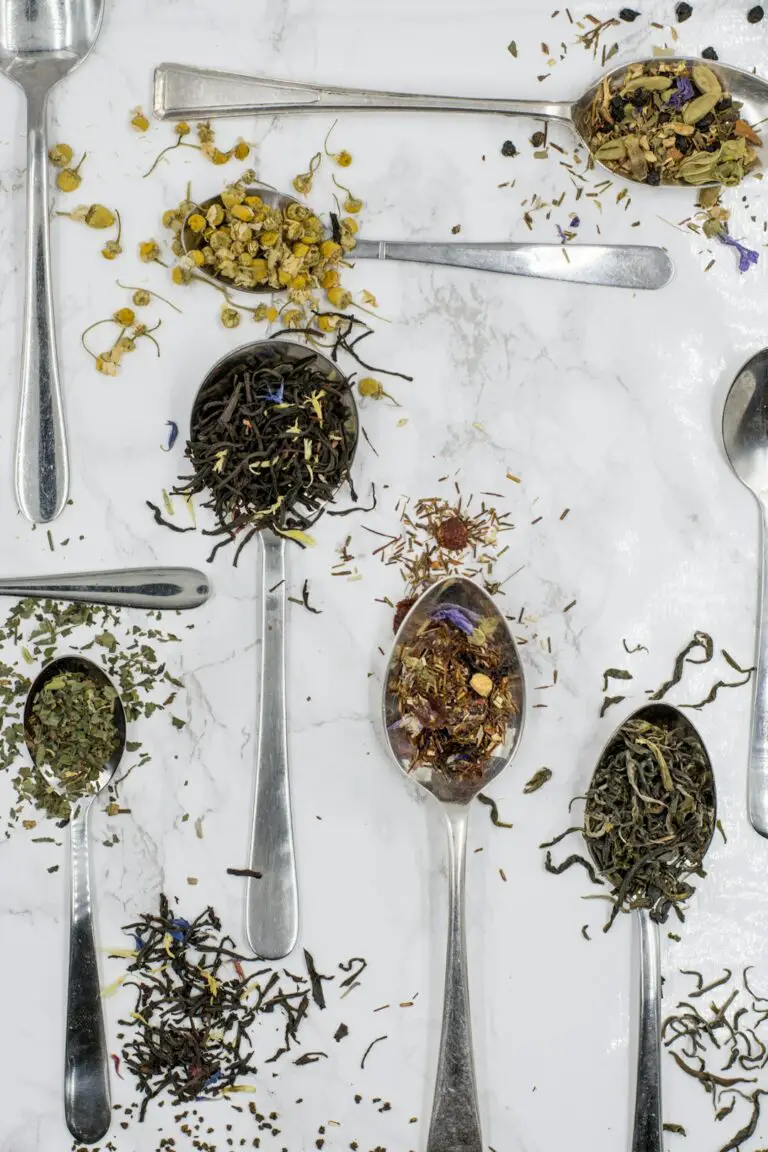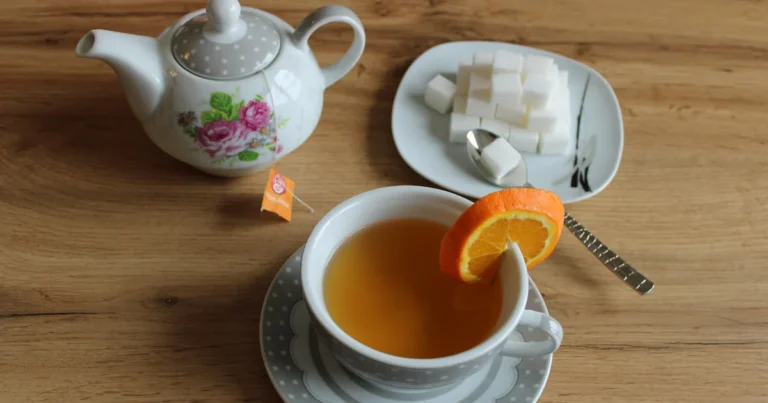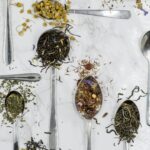Support our educational content for free when you purchase through links on our site. Learn more
Discover the 10 Best Tea Flavors for Beginners in 2025 🍵
Stepping into the world of tea can feel like opening a treasure chest filled with endless flavors, aromas, and traditions. But where do you start when faced with aisles of options ranging from delicate white teas to bold black blends and caffeine-free herbal infusions? At Tea Brands™, we’ve brewed, sipped, and savored countless teas to bring you the 10 best tea flavors for beginners—each chosen for their approachable taste, ease of brewing, and universal appeal.
Did you know that nearly 70% of new tea drinkers abandon tea after their first bitter cup? 😱 That’s why mastering the right flavors and brewing techniques is crucial. Later in this guide, we’ll reveal expert tips to avoid common pitfalls like over-steeping and scorching your leaves, plus a fun quiz to match your personality with your perfect brew. Ready to find your new favorite cup? Let’s dive in!
Key Takeaways
- Start simple with approachable flavors like peppermint, chamomile, and Earl Grey to ease into tea drinking.
- Understand tea categories—from black and green to herbal infusions—to find what suits your taste and caffeine needs.
- Master brewing basics: water temperature and steep time are key to unlocking great flavor without bitterness.
- Explore versatile options including caffeine-free rooibos and decaf black teas for any time of day.
- Customize your cup with sweeteners, milk, or lemon to enhance your tea experience.
Ready to shop for your perfect beginner tea? Check out these favorites:
- Peppermint & Herbal Teas: Shop on Amazon
- Classic Black Teas (Earl Grey, English Breakfast): Shop Twinings on Amazon
- Green Teas (Sencha, Genmaicha): Shop Japanese Green Tea on Amazon
- Rooibos & Chai Blends: Shop Numi Organic Tea on Amazon
Dive into the full guide to unlock the secrets behind each flavor and brew your way to tea bliss!
Table of Contents
- ⚡️ Quick Tips and Facts
- 📜 The Journey Begins: A Brief History of Tea for New Sippers
- Why Even Start with Tea? Unveiling the Benefits for Beginners 🌱
- Navigating the Tea Aisle: Understanding Tea Categories 🧭
- Our Top Picks: The 10 Best Tea Flavors for Beginners 🎉
- 1. Peppermint Tea: The Refreshing Start 🍃
- 2. Chamomile Tea: The Calming Embrace 🌼
- 3. Earl Grey: A Classic with a Twist 🍋
- 4. English Breakfast: The Morning Staple ☀️
- 5. Green Tea (Sencha/Genmaicha): The Grassy Goodness 🍵
- 6. Rooibos Tea: The Naturally Sweet & Red Brew 🇿🇦
- 7. Lemon Ginger Tea: The Zesty Zinger 🍋🌶️
- 8. Berry Infusions: A Fruity Delight 🍓🫐
- 9. Vanilla Chai: The Spiced Comfort 🧡
- 10. Decaf Black Tea: All the Flavor, None of the Buzz 🌙
- Beyond the Bag: Essential Brewing Tips for the Perfect Beginner’s Cup ☕
- Sweeteners & Add-ins: Elevating Your Beginner Tea Experience 🍯🥛
- Iced Tea for Newbies: Chilling Out with Your Favorite Brews 🧊
- Common Beginner Mistakes to Avoid (and How to Fix Them!) 🚫
- Your Tea Personality Quiz: Discover Your Perfect Brew! 🤔
- Beyond the Cup: Exploring Tea’s Cultural Significance 🌍
- Conclusion: Your First Sips, a Lifelong Journey 🚀
- Recommended Links: Dive Deeper into the World of Tea 🔗
- FAQ: Your Beginner Tea Questions Answered! ❓
- Reference Links: Our Sources & Further Reading 📚
Welcome, future tea lover! Ever stood in the tea aisle, completely overwhelmed by a wall of colorful boxes promising everything from serene slumber to a kickstart for your morning? You’re not alone. Here at Tea Brands™, we’ve guided countless newcomers through this flavorful forest. The journey from “I don’t like tea” to “I can’t start my day without it” is shorter and far more delicious than you think. Let’s demystify this ancient drink and find your perfect first cup. After all, discovering which tea is best taste in world? is a personal adventure, and it starts right here.
⚡️ Quick Tips and Facts
Dipping your toes into the vast ocean of tea? Here are some rapid-fire tips to get you started on the right foot.
- Start with Flavors You Know: Love mint? Try Peppermint tea. A fan of citrus? Earl Grey is your friend. Leaning into familiar flavors is a fantastic bridge into the tea world.
- Don’t Boil All Teas: This is a big one! Boiling water can scorch delicate leaves, especially green and white teas, making them bitter. We’ll cover this more later, but it’s a game-changer.
- Herbal Teas are Your Caffeine-Free Friends: Technically called “tisanes,” these are infusions of herbs, fruits, and flowers. They’re a perfect, gentle introduction without the buzz.
- Give Leaves Room: If you’re using loose-leaf tea, don’t pack the infuser too tightly. The leaves need space to expand and release all their wonderful flavors.
- Taste Before You Sweeten: Many teas, especially herbal and fruit blends, have a natural sweetness. Take a sip before adding sugar or honey; you might be pleasantly surprised!
📜 The Journey Begins: A Brief History of Tea for New Sippers
Tea isn’t just a drink; it’s a global phenomenon steeped in history. Legend has it that in 2737 BC, Chinese Emperor Shen Nung was boiling water when leaves from a wild tea tree blew into his pot. Intrigued by the pleasant aroma, he took a sip and… voilà! Tea was born.
From ancient Chinese dynasties and Japanese tea ceremonies to the British afternoon tradition, tea has shaped cultures, economies, and daily rituals for millennia. All “true” teas—black, green, white, oolong, and pu-erh—come from a single plant: Camellia sinensis. The incredible diversity in flavor comes from where it’s grown and how the leaves are processed after harvesting. Understanding this shared origin is the first step to appreciating the nuances you’re about to discover!
Why Even Start with Tea? Unveiling the Benefits for Beginners 🌱
So, why trade your usual beverage for a cup of tea? Besides the amazing taste, you’re signing up for a host of potential wellness perks. Many people begin exploring tea to find a gentler alternative to coffee or sugary sodas.
Here at the tasting table, we’ve seen it all. One of our tasters, Chloe, was a die-hard coffee fanatic until the jitters got to be too much. She switched to black tea in the mornings and found she got the focus without the frantic energy.
Tea is more than just flavored water; it’s packed with compounds like antioxidants and L-theanine, which is known for promoting a state of calm alertness. Whether you’re seeking digestive support from ginger tea or a moment of tranquility with chamomile, there’s a blend for nearly every mood and moment. For a deeper dive, check out our articles on the Health Benefits of Tea.
Navigating the Tea Aisle: Understanding Tea Categories 🧭
The tea aisle can feel like a library where you don’t know the language. Let’s be your translators. As we mentioned, all true teas come from the Camellia sinensis plant. The key difference is oxidation—how long the leaves are exposed to air after being picked.
| Tea Type | Oxidation Level | General Flavor Profile | Caffeine Level (Approx.) |
|---|---|---|---|
| White Tea | Minimal | Delicate, subtly sweet, floral | Low (15-30 mg) |
| Green Tea | Unoxidized (steamed/pan-fired) | Grassy, vegetal, nutty, savory | Low-Medium (20-45 mg) |
| Oolong Tea | Partially Oxidized (10-80%) | Wide range: floral & light to dark & roasty | Medium (30-60 mg) |
| Black Tea | Fully Oxidized | Bold, malty, robust, brisk | Medium-High (40-70 mg) |
| Herbal Infusions | N/A (not from Camellia sinensis) | Varies widely: minty, fruity, spicy, floral | None (usually) |
Green Tea: The Gentle Introduction 🌱
Green tea is unoxidized, which preserves its fresh, vibrant character. If your only experience is with a bitter, poorly brewed cup, please give it another chance! When brewed correctly (with cooler water!), it can be wonderfully sweet and refreshing.
- For Beginners, We Suggest:
- Genmaicha: A Japanese green tea with toasted brown rice. It has a nutty, savory flavor that many find incredibly comforting and easy to drink.
- Jasmine Green Tea: Green tea scented with jasmine blossoms. It’s fragrant, light, and a beautiful entry point for those who enjoy floral notes.
Black Tea: The Bold & Familiar Friend ☕
Fully oxidized, black tea is what most Westerners think of when they hear “tea.” It’s robust, flavorful, and takes milk and sugar well, making it a great starting point for former coffee drinkers.
- For Beginners, We Suggest:
- English Breakfast: A classic blend of Assam, Ceylon, and Kenyan teas, it’s hearty and perfect for the morning.
- Earl Grey: Black tea infused with bergamot orange oil. Its citrusy aroma is iconic and beloved worldwide.
Herbal Infusions: The Caffeine-Free Wonderland 🌿
Welcome to the wild side! Since these aren’t made from the tea plant, they’re naturally caffeine-free and come in an endless variety of flavors. This is often the easiest category for beginners. As one guide notes, herbal tea is perfect for non-tea drinkers because it avoids bitterness and comes in many comforting flavors. Explore our Herbal Tea section for more ideas.
- For Beginners, We Suggest:
- Peppermint: Refreshing, cooling, and great for digestion.
- Chamomile: Known for its calming properties, with a gentle, apple-like flavor.
- Rooibos (Red Tea): A South African herb that’s naturally sweet with a slightly nutty, earthy vanilla taste.
White Tea: The Delicate Whisper 🌬️
The least processed of all true teas, white tea is made from the youngest buds and leaves. It has a subtle, nuanced flavor that can be floral, fruity, and incredibly delicate. It’s a contender for the best hot tea for beginners who want just a little flavor and caffeine.
Oolong Tea: The Enigmatic Middle Ground 🎭
Oolong is the most complex category, sitting between green and black tea in terms of oxidation. This results in a massive flavor spectrum. Lighter oolongs can be floral and creamy (like Milk Oolong), while darker oolongs are roasty and rich. It’s a fantastic category to explore once you’ve found your footing.
Pu-erh Tea: The Aged Adventure 🕰️
Pu-erh is a fermented tea from Yunnan, China, often aged for years like a fine wine. It has a deep, earthy, and smooth flavor. While some beginners fall in love with it instantly, its unique profile can be an acquired taste. We recommend saving this one for a bit later in your tea journey.
Our Top Picks: The 10 Best Tea Flavors for Beginners 🎉
Ready for the grand tour? After countless hours of sipping and debating, our team at Tea Brands™ has curated the ultimate beginner’s list. We’ve chosen these for their approachable flavors, widespread availability, and general deliciousness.
1. Peppermint Tea: The Refreshing Start 🍃
If you can enjoy a peppermint candy, you can enjoy this tea. It’s bright, invigorating, and incredibly soothing, especially after a meal. It’s a pure, simple flavor that needs no introduction.
- Our Rating:
- Beginner Friendliness: 10/10
- Flavor Intensity: 7/10
- Caffeine-Free: ✅
- Brands to Try: Stash is known for using high-quality Pacific Northwest peppermint. Twinings is another excellent, widely available option.
- 👉 Shop Peppermint Tea on: Amazon | Walmart
2. Chamomile Tea: The Calming Embrace 🌼
This is the tea equivalent of a warm hug. Made from chamomile flowers, it has a gentle, slightly sweet, and apple-like floral flavor. It’s famous for its calming properties, making it a perfect bedtime brew.
- Our Rating:
- Beginner Friendliness: 10/10
- Flavor Intensity: 4/10
- Caffeine-Free: ✅
- Brands to Try: Celestial Seasonings Sleepytime is an iconic blend that also includes spearmint and lemongrass for added complexity.
- 👉 Shop Chamomile Tea on: Amazon | Target
3. Earl Grey: A Classic with a Twist 🍋
The secret to Earl Grey’s charm is bergamot, a fragrant citrus fruit. This addition transforms a simple black tea into an aromatic, bright, and sophisticated brew. It’s a fantastic bridge for those who think black tea might be too one-note.
- Our Rating:
- Beginner Friendliness: 9/10
- Flavor Intensity: 7/10
- Caffeine: ✅
- Brands to Try: Twinings is the classic choice, but we also love Vahdam’s Earl Grey Citrus Black Tea for a zesty kick.
- 👉 Shop Earl Grey Tea on: Amazon | Walmart
4. English Breakfast: The Morning Staple ☀️
This is your quintessential, no-nonsense black tea. It’s a blend of several black teas, designed to be rich, robust, and full-bodied. It’s strong enough to handle milk and sugar, making it a perfect replacement for your morning coffee.
- Our Rating:
- Beginner Friendliness: 8/10
- Flavor Intensity: 8/10
- Caffeine: ✅
- Brands to Try: Twinings is America’s #1 English Breakfast for a reason—it’s a perfectly balanced and reliable brew.
- 👉 Shop English Breakfast Tea on: Amazon | Target
5. Green Tea (Sencha/Genmaicha): The Grassy Goodness 🍵
Ready to try a true green tea? We recommend starting with a Japanese variety. Sencha is a classic with bright, slightly sweet, and fresh notes. For something even more unique, try Genmaicha, which has toasted rice mixed in, giving it a wonderfully nutty and savory flavor that balances any potential bitterness.
- Our Rating:
- Beginner Friendliness: 7/10
- Flavor Intensity: 6/10
- Caffeine: ✅
- Brands to Try: Look for brands specializing in Japanese teas like Ito En or explore options at a local Asian market.
- 👉 Shop Green Tea on: Amazon | Walmart
6. Rooibos Tea: The Naturally Sweet & Red Brew 🇿🇦
Hailing from South Africa, Rooibos (pronounced “roy-boss”) is a caffeine-free herbal infusion with a naturally sweet, nutty, and smooth flavor. It has hints of vanilla and is delicious on its own or with a splash of milk. It’s a fantastic, forgiving brew that won’t get bitter if you over-steep it.
- Our Rating:
- Beginner Friendliness: 9/10
- Flavor Intensity: 6/10
- Caffeine-Free: ✅
- Brands to Try: Numi Organic Tea offers a wonderful Rooibos Chai for those who like spice.
- 👉 Shop Rooibos Tea on: Amazon | Walmart
7. Lemon Ginger Tea: The Zesty Zinger 🍋🌶️
This is a powerhouse combination of spicy ginger and bright lemon. It’s a warming, invigorating herbal blend that’s perfect for a chilly day or when you’re feeling under the weather. Ginger is well-known for its digestive benefits.
- Our Rating:
- Beginner Friendliness: 8/10
- Flavor Intensity: 9/10
- Caffeine-Free: ✅
- Brands to Try: Traditional Medicinals Organic Ginger is a pure, potent option. Many brands offer pre-blended lemon and ginger options.
- 👉 Shop Lemon Ginger Tea on: Amazon | Target
8. Berry Infusions: A Fruity Delight 🍓🫐
If you have a sweet tooth, fruit-infused herbal teas are your best friend. Blends featuring hibiscus, rose hips, and various berries are tart, juicy, and often brew into a beautiful ruby-red liquor. They are fantastic both hot and iced.
- Our Rating:
- Beginner Friendliness: 9/10
- Flavor Intensity: 8/10
- Caffeine-Free: ✅
- Brands to Try: Tazo Passion is a wildly popular blend of hibiscus, orange peel, and passion fruit flavors.
- 👉 Shop Berry Tea on: Amazon | Walmart
9. Vanilla Chai: The Spiced Comfort 🧡
Traditional Masala Chai is a bold blend of black tea and spices like cinnamon, cardamom, cloves, and ginger. For a beginner, we recommend a Vanilla Chai or a Rooibos Chai. The vanilla softens the spice blend, making it creamy and comforting, while a rooibos base removes the caffeine and potential for bitterness.
- Our Rating:
- Beginner Friendliness: 8/10
- Flavor Intensity: 9/10
- Caffeine: Varies (Black tea base has caffeine, Rooibos base does not)
- Brands to Try: Numi’s Rooibos Chai is a fantastic caffeine-free option.
- 👉 Shop Chai Tea on: Amazon | Target
10. Decaf Black Tea: All the Flavor, None of the Buzz 🌙
Love the robust flavor of black tea but need to avoid caffeine? A good decaf is the answer. We’re partial to Bigelow’s Constant Comment, a secret family recipe blending black tea with orange rind and sweet spice. It’s aromatic, flavorful, and has been a beloved American classic for decades.
- Our Rating:
- Beginner Friendliness: 9/10
- Flavor Intensity: 7/10
- Caffeine-Free: ✅ (or very low)
- Brands to Try: Bigelow Constant Comment Decaffeinated is a must-try.
- 👉 Shop Constant Comment on: Amazon | Walmart
Beyond the Bag: Essential Brewing Tips for the Perfect Beginner’s Cup ☕
You’ve picked your tea, now what? How you brew it is just as important as the leaves themselves. As one expert puts it, “Just, let’s talk about some of the most common problems that can lead to tea that doesn’t taste good.” Let’s avoid those problems!
Water Quality Matters: The Unsung Hero 💧
Your tea is 99% water, so using good quality water makes a huge difference. If your tap water has a strong taste of chlorine or minerals, it will affect your tea’s flavor.
✅ Pro Tip: Use fresh, cold, filtered water for the cleanest taste. Avoid distilled water, as it lacks the minerals that help bring out the tea’s flavor.
Temperature Control: Hot, Hot, Hot (or Not!) 🔥
This is the #1 mistake beginners make. Using water that’s too hot, especially for delicate teas, is a one-way ticket to Bitterville. Boiling water can literally burn the leaves.
Here’s a handy guide:
| Tea Type | Ideal Water Temperature | Visual Cue (if no thermometer) |
|---|---|---|
| White & Green | 170-185°F (77-85°C) | Small bubbles form, steam rises gently |
| Oolong | 180-200°F (82-93°C) | Larger bubbles rise, more steam |
| Black & Herbal | 200-212°F (93-100°C) | Full, rolling boil |
✅ Pro Tip: If you don’t have a variable-temperature kettle, simply boil the water and let it sit for 2-3 minutes to cool down before pouring it over green or white tea.
Steep Time Secrets: Patience is a Virtue ⏳
The second most common mistake is over-steeping. Leaving the tea bag or leaves in for too long releases excess tannins, which are responsible for that dry, astringent, and bitter taste.
| Tea Type | Recommended Steep Time |
|---|---|
| White Tea | 2-4 minutes |
| Green Tea | 1-3 minutes |
| Oolong Tea | 2-5 minutes |
| Black Tea | 3-5 minutes |
| Herbal Infusions | 5-7 minutes (very forgiving) |
✅ Pro Tip: Set a timer! It’s easy to forget, and a minute can make a huge difference. If you find your tea too strong, shorten the steep time. Too weak? Let it steep a bit longer next time.
The Right Tools: Simple Gear for Great Brews 🛠️
You don’t need a lot of fancy equipment to start. A simple mug and a tea bag work just fine! If you want to explore loose-leaf tea (which we highly recommend for superior flavor), you’ll just need an infuser. A simple mesh ball infuser or a “brewing basket” that sits in your mug is a perfect, inexpensive starting point.
For a great visual guide on getting started with loose leaf, the video “Loose Leaf Tea for Beginners – 10 Beginners Tea Types to Start with” embedded in this article is incredibly helpful. You can jump right to it here: #featured-video.
Sweeteners & Add-ins: Elevating Your Beginner Tea Experience 🍯🥛
Part of the fun of tea is customizing it to your exact preference!
- Sweeteners: Honey, raw sugar, agave, or maple syrup can all be delicious. Start with a small amount and add more to taste. Honey pairs beautifully with herbal and black teas, while a simple sugar cube is classic in a cup of Earl Grey.
- Milk/Cream: Typically reserved for robust black teas like English Breakfast or Chai. The fats in the milk soften the tannins and create a rich, creamy beverage. Rule of thumb: Don’t add milk to delicate green, white, or citrusy teas, as it can curdle or overwhelm the flavor.
- Lemon: A slice of fresh lemon is a perfect addition to black tea (like Earl Grey or English Breakfast) and many herbal teas, adding a bright, zesty note.
Iced Tea for Newbies: Chilling Out with Your Favorite Brews 🧊
Making delicious iced tea at home is incredibly easy and a great way to enjoy your favorite flavors in warmer weather.
The Simple Hot-Brew Method:
- Brew it Strong: Use double the amount of tea bags or loose leaf you’d normally use for a hot cup. This is because the ice will dilute it.
- Steep as Usual: Follow the recommended steep times for your tea type. For black tea, don’t steep longer than 5 minutes or it can become cloudy and bitter when chilled.
- Sweeten While Hot: If you’re adding sugar or honey, dissolve it in the hot tea before you chill it.
- Cool and Chill: Let the tea concentrate cool to room temperature before pouring it over a generous amount of ice. Pouring hot tea directly over ice can make it cloudy.
✅ Pro Tip: Fruity and herbal teas like Tazo Passion or a simple berry blend make for phenomenal, vibrant iced teas that need little to no sweetener.
Common Beginner Mistakes to Avoid (and How to Fix Them!) 🚫
We’ve all been there. Your first attempt at tea tastes… well, not great. Don’t give up! The problem is almost certainly in the preparation, not the tea itself.
Over-steeping: The Bitter Truth 😬
- The Mistake: Leaving the tea bag in your cup indefinitely while you drink it.
- Why It’s Bad: This continuously extracts tannins, leading to an increasingly bitter and astringent brew. As one guide bluntly states, “Oversteeping equals bitter tea.”
- The Fix: Remove the tea bag or infuser once the steeping time is up! Set a timer on your phone. If you’ve already over-steeped a cup, you can try diluting it with a bit more hot water or adding a splash of milk (if it’s a black tea) to mellow the flavor.
Wrong Water Temperature: A Flavor Faux Pas 🌡️
- The Mistake: Using scorching, boiling water for every type of tea.
- Why It’s Bad: Delicate green and white tea leaves get “cooked” by boiling water, releasing all their bitterness instantly. Conversely, water that isn’t hot enough for black tea will result in a weak, flavorless cup.
- The Fix: Refer to our temperature chart above! A small investment in a kettle with temperature control is a game-changer for any aspiring tea lover. If not, just use the “wait to cool” method.
Ignoring Quality: You Get What You Steep For! 💸
- The Mistake: Grabbing the oldest, dustiest box of tea from the back of the cupboard.
- Why It’s Bad: Tea, especially in bag form, does lose its flavor over time. Stale tea will taste flat and papery, no matter how well you brew it.
- The Fix: Start with a fresh box from a reputable brand. You don’t have to spend a fortune, but freshness is key. Store your tea in a cool, dark, dry place away from strong odors (like coffee or spices!) to preserve its flavor.
Your Tea Personality Quiz: Discover Your Perfect Brew! 🤔
Still not sure where to start? Answer these quick questions to find your tea soulmate.
1. What’s your go-to morning beverage?
a) A strong cup of coffee, black. (→ Try English Breakfast)
b) A latte or something creamy and sweet. (→ Try a Vanilla Chai)
c) A glass of orange juice. (→ Try Earl Grey or a Berry Infusion)
d) Just water, I don’t need a boost. (→ Try Peppermint or Rooibos)
2. Pick a dessert:
a) A warm apple crumble. (→ Try Chamomile)
b) A zesty lemon tart. (→ Try Lemon & Ginger)
c) A rich, spiced carrot cake. (→ Try a Rooibos Chai)
d) A refreshing mint chocolate chip ice cream. (→ Try Peppermint)
3. How do you want to feel after your drink?
a) Energized and ready to conquer the day. (→ Try English Breakfast)
b) Calm, cozy, and relaxed. (→ Try Chamomile)
c) Refreshed and uplifted. (→ Try Peppermint or Tazo Passion)
d) Comforted and warm. (→ Try Chai or Lemon & Ginger)
Beyond the Cup: Exploring Tea’s Cultural Significance 🌍
Drinking tea is an experience that connects you to centuries of tradition around the globe. In Morocco, mint tea is a symbol of hospitality. In Japan, the chanoyu (tea ceremony) is a meditative art form. In Britain, “afternoon tea” is a cherished social ritual.
As you explore different teas, you’re also taking a journey through different cultures. We encourage you to check out our Tea Brand Guides and Tea Brand Spotlights to learn more about the stories and people behind your favorite brews. Every cup has a history, and discovering it makes the experience that much richer.
Conclusion: Your First Sips, a Lifelong Journey 🚀
Congratulations! You’ve just unlocked the door to a world brimming with flavor, culture, and wellness. From the gentle whispers of white tea to the bold embrace of English Breakfast, and the caffeine-free comfort of rooibos, the best tea flavor for beginners is truly the one that speaks to your palate and mood.
Remember Chloe’s story? She swapped jittery coffee mornings for smooth black tea cups and found her rhythm. Your journey will be just as personal and rewarding. The key takeaway? Experiment, savor, and don’t be afraid to adjust your brewing ritual until you find your perfect cup.
If you’re wondering about the teas we highlighted, here’s a quick recap:
Positives:
- Wide variety of approachable flavors tailored for beginners.
- Options for every caffeine preference, from energizing black teas to soothing herbal infusions.
- Easy-to-follow brewing tips that unlock the best flavor without bitterness.
- Versatility to enjoy teas hot or iced, sweetened or pure.
Negatives:
- Some delicate teas require precise brewing temperatures and times, which can be intimidating at first.
- Pu-erh and some oolongs may be acquired tastes, better suited for later exploration.
- Quality and freshness matter — avoid stale teas for best experience.
Our confident recommendation? Start simple with peppermint, chamomile, or a classic Earl Grey. These are crowd-pleasers that rarely disappoint. Then, gradually explore the green teas, rooibos, and chai blends to expand your palate.
So, what’s next? Grab your favorite tea, brew it with care, and savor the moment. Your lifelong tea adventure awaits!
Recommended Links: Dive Deeper into the World of Tea 🔗
Ready to shop or learn more? Here are some of our favorite trusted sources and products to get you started:
- Peppermint Tea:
- Chamomile Tea:
- Earl Grey Tea:
- English Breakfast Tea:
- Green Tea (Sencha/Genmaicha):
- Rooibos Tea:
- Lemon Ginger Tea:
- Berry Infusions:
- Vanilla Chai:
- Decaf Black Tea:
Books to deepen your tea knowledge:
- The Tea Enthusiast’s Handbook by Mary Lou Heiss & Robert J. Heiss — A beautifully illustrated guide to tea types, brewing, and tasting.
- The Story of Tea: A Cultural History and Drinking Guide by Mary Lou Heiss — Dive into tea’s rich history and cultural significance.
- Tea: History, Terroirs, Varieties by Kevin Gascoyne — A comprehensive exploration of tea’s origins and varieties.
FAQ: Your Beginner Tea Questions Answered! ❓
What are the mildest tea flavors for beginners?
Mild teas are those with gentle, subtle flavors and low bitterness, making them perfect for newcomers. Examples include:
- White Tea: Delicate, lightly sweet, with floral or fruity notes.
- Chamomile: A soothing herbal infusion with apple-like sweetness.
- Peppermint: Refreshing and cool without any bitterness.
- Rooibos: Naturally sweet and nutty, caffeine-free.
These teas are forgiving in brewing and tend to be more universally liked by those new to tea.
How do I choose a tea flavor if I’m new to drinking tea?
Start by considering your flavor preferences outside of tea:
- Do you enjoy minty flavors? Try peppermint tea.
- Are you a fan of citrus? Earl Grey or lemon-infused teas are excellent.
- Prefer something sweet and floral? Chamomile or berry infusions might delight you.
- If you like coffee, a robust English Breakfast or chai can be a satisfying alternative.
Experimentation is key. Use our Tea Personality Quiz as a fun guide to narrow down choices.
Read more about “Discover Lipton Tea Company: 12 Must-Try Teas & Secrets (2025) 🍵”
Which tea flavors are easiest to enjoy for first-time tea drinkers?
Teas that balance sweetness and familiar flavors tend to be easiest:
- Fruit-flavored teas (e.g., berry, peach, or orange blends) mask bitterness and offer a pleasant taste.
- Dessert teas with natural sweetness (like coconut macaron or hazelnut blends) appeal to those with a sweet tooth.
- Spiced chai blends can mask any harshness with their bold spices.
Herbal teas are also very beginner-friendly since they are caffeine-free and come in many approachable flavors.
What are some popular tea flavors recommended for beginners?
Based on consumer insights and expert tasters at Tea Brands™, these are crowd favorites:
- Peppermint
- Chamomile
- Earl Grey
- English Breakfast
- Green Tea (Sencha, Genmaicha)
- Rooibos
- Lemon Ginger
- Berry Infusions
- Vanilla Chai
- Decaf Black Tea
These teas cover a broad spectrum of tastes and caffeine levels, making them ideal starting points.
Read more about “Discover 10 Top Loose Leaf Tea Companies 🌿”
How important is brewing technique for beginners?
Brewing is crucial! Even the best tea can taste bitter or flat if brewed incorrectly. Pay attention to:
- Water temperature (cooler for green and white teas).
- Steeping time (avoid oversteeping).
- Tea-to-water ratio (don’t overfill your infuser).
Mastering these basics ensures you get the best flavor every time.
Can I drink tea if I want to avoid caffeine?
Absolutely! Herbal teas like chamomile, peppermint, and rooibos are naturally caffeine-free. Additionally, decaffeinated versions of black and green teas are widely available and retain much of their flavor.
Read more about “Which Type of Tea Is the Best? ☕️ Discover 14 Must-Try Brews (2025)”
Reference Links: Our Sources & Further Reading 📚
- University of Wyoming Extension: Beginner’s Tea Guide – Community Vitality & Health
- Plum Deluxe: Best Tasting Tea for Beginners
- Sencha Tea Bar: Tea for Beginners
- Twinings Official Website: https://twiningsusa.com
- Vahdam Teas: https://www.vahdam.com
- Numi Organic Tea: https://numitea.com
- Traditional Medicinals: https://www.traditionalmedicinals.com
- Bigelow Tea: https://www.bigelowtea.com
- Celestial Seasonings: https://www.celestialseasonings.com
Ready to brew your perfect cup? Remember, every sip is a step on your tea journey. Happy steeping! 🍵









